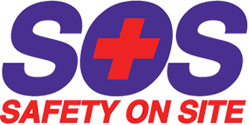With heat wave warnings in effect, rising temperatures and exposure to the heat and sun can lead to a heat related emergency. Prolonged exposure can increase the risk of dehydration and the potential for heat stroke which is the body’s inability to regulate its temperature. The body overheats to a temperature of 40 C (104 F) or higher, usually due to excessive exercise or lengthy exposure to warm temperatures and/or sun.
Heat stroke is a medical emergency. It should be treated immediately. The longer it takes to receive medical treatment, the greater the risk for serious complications. The increase in body temperature can damage muscles and organs such as the brain, heart and kidneys and even cause death.
According to the Canadian Red Cross the signs and symptoms of heat stroke include:
- Cramps or muscle tightening, usually in the legs and abdomen but they can be in other parts of the body too
- Headache
- Nausea
- Dizziness, weakness, and feeling faint
- Skin that is flush or paler than usual, or damp skin
- Rapid shallow breathing
- Irritable, bizarre, or aggressive behaviour
Additional symptoms can also include a fast, strong pulse, blood pressure changes, either high or low, confusion and loss of consciousness.
If you suspect someone is suffering from heat stroke, the Red Cross recommends:
- Moving the person to a cooler place
- Give the person cool water to drink in sips
- Have the person loosen clothing
- Fan the person
- Put cool water on the person’s skin, use wet cool clothes
- If the person’s condition is severe, put covered ice packs in each armpit and on the back of the person’s neck
- Call for help (EMS/9-1-1)
Those most vulnerable to heat stroke are children, athletes, those who work outdoors, the elderly, those on certain medications and those with chronic illnesses such as heart disease, poor blood circulation, obesity and mental illness. The Centre for Disease Control states the elderly and people with chronic medical conditions are more vulnerable to extreme heat for several reasons; they may be less likely to sense temperature changes and the effects of heat stroke may be worse with certain medications.
Prevention is key. Measures to take are to stay cool and hydrated. Wear light clothing. Don’t over exert yourself or exercise in the heat and stay indoors in an air conditioned place. In extreme temperatures, a fan is not a substitute for an air-conditioner. Take a cool shower, head to a public recreation centre or public library. Drink plenty of liquids excluding alcohol and sugary beverages. Certain medical conditions may require limited fluid intake. Therefore, in such circumstances, it is advisable to seek medical direction. Keep your pets hydrated too. Be sure to provide ample water, shade and a cool place for your pets.
Be aware of heat advisories and extreme heat alerts in your area. Watch the local news and be familiar with cooling shelter locations in your city. Lastly, use the buddy system. If you are living on your own, have a friend, relative or neighbour check on you regularly.
Article written by Rita Ganassini, SOS First Aid







